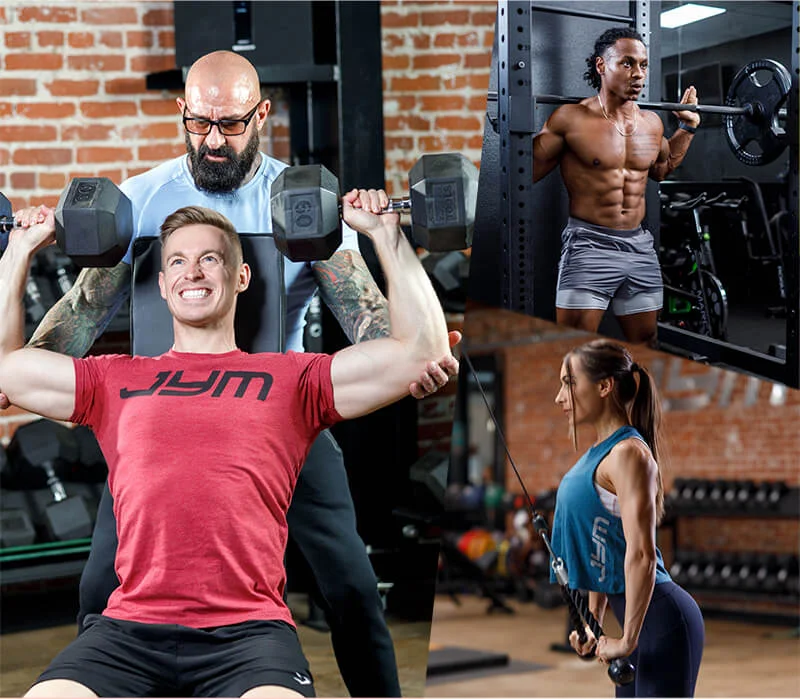Strong, sculpted shoulders are not just about looking good—they play a key role in overall upper body strength and movement. Whether you’re lifting groceries, pushing open a heavy door, or working out at the gym, your shoulders are constantly at work. That’s why incorporating good shoulder exercises into your fitness routine is essential for both strength and injury prevention.
The shoulders, or deltoids, are made up of three main parts—the anterior (front), lateral (side), and posterior (rear) deltoids. Training all three areas helps create balanced muscle development, better posture, and improved athletic performance. The best part? You don’t always need heavy weights or fancy machines—many effective shoulder exercises can be done at home with minimal equipment.
Why Shoulder Training Matters
Shoulder strength impacts more than you might think. It enhances your ability to perform daily tasks, supports upper body stability, and helps protect your joints from injury. Strong shoulders also contribute to better overall posture, especially if you spend hours sitting at a desk or using a computer.
When you include good shoulder exercises in your workout routine, you can expect:
Improved upper body strength: Strong shoulders make pressing, lifting, and carrying easier.
Better posture and alignment: Shoulder exercises strengthen stabilizing muscles, preventing slouching.
Injury prevention: Well-developed shoulder muscles protect the rotator cuff and other small joints from strain.
Enhanced aesthetics: Toned shoulders add definition to your arms and improve your overall physique.
The Best Good Shoulder Exercises for Strength and Tone
Let’s look at some of the most effective good shoulder exercises you can incorporate into your workouts. These movements target all parts of the shoulder, ensuring balance and full development.
1. Shoulder Press
The shoulder press is one of the best compound movements for building strength in your deltoids, triceps, and upper chest.
How to do it: Stand or sit upright with a dumbbell in each hand. Start with the weights at shoulder height, palms facing forward, and press them upward until your arms are fully extended. Slowly lower them back to the starting position.
2. Lateral Raises
Lateral raises focus on the side deltoids, helping you achieve that broad, athletic shoulder look.
How to do it: Hold a dumbbell in each hand by your sides. Keeping a slight bend in your elbows, lift your arms out to the sides until they’re parallel with the floor. Lower them slowly.
3. Front Raises
This move isolates the front deltoids, enhancing shoulder strength and stability.
How to do it: With dumbbells in hand, lift one or both arms straight in front of you until they reach shoulder height. Lower with control.
4. Reverse Fly
The reverse fly works the rear deltoids, an often neglected area that’s crucial for good posture and balance.
How to do it: Bend slightly at the hips with a dumbbell in each hand. Keep a slight bend in your elbows and lift your arms out to the sides, squeezing your shoulder blades together.
5. Arnold Press
Named after Arnold Schwarzenegger, this dynamic movement engages all three deltoid heads.
How to do it: Start with dumbbells in front of your chest, palms facing you. As you press the weights overhead, rotate your wrists so that your palms face forward. Reverse the motion as you lower.
6. Pike Push-Ups
For those training at home without equipment, this is one of the best bodyweight shoulder builders.
How to do it: Begin in a downward dog position, with hips raised and hands shoulder-width apart. Lower your head toward the floor by bending your elbows, then push back up.
7. Plank to Downward Dog
This exercise strengthens both the shoulders and core while improving flexibility.
How to do it: Start in a plank position. Push your hips up and back into downward dog, hold for a second, then return to plank. Repeat.
Tips for Getting the Most Out of Your Shoulder Workouts
To maximize the results of your good shoulder exercises, keep these simple but effective tips in mind:
Warm up properly: Gentle arm circles and light dynamic stretches prepare the joints for movement.
Focus on form: Quality reps prevent injury and ensure the right muscles are activated.
Avoid overtraining: Your shoulders are small muscles—train them 2–3 times per week with rest days in between.
Include variety: Mix pressing, raising, and pulling movements for complete shoulder development.
Stretch and recover: Shoulder stretches after workouts can help reduce tightness and improve flexibility.
Consistency is key. Even 20–30 minutes of shoulder-focused training a few times a week can lead to noticeable improvements in strength and definition.
Common Mistakes to Avoid
When performing shoulder exercises, some mistakes can lead to injury or limit progress. Watch out for these:
Using too much weight: Overloading can strain your joints. Start light and progress gradually.
Poor posture: Avoid hunching your shoulders or arching your back excessively.
Neglecting rear delts: Balanced shoulder training prevents rounding and improves posture.
By staying mindful of your form, you’ll protect your shoulders while achieving the best results.
tart Strengthening Your Shoulders Today
Your shoulders deserve attention and care—after all, they support almost every upper body movement you make. By consistently doing good shoulder exercises, you’ll not only build strength and stability but also enhance your overall fitness and confidence.
You don’t need to spend hours in the gym or lift heavy weights. All it takes is consistency, good form, and the willingness to start. Whether you’re training at home or in the gym, these exercises can help you reach your goals one rep at a time.
Ready to take the first step? Grab a pair of dumbbells or use your body weight, clear a bit of space, and start working on your shoulder strength today. Your body—and your future workouts—will thank you!





